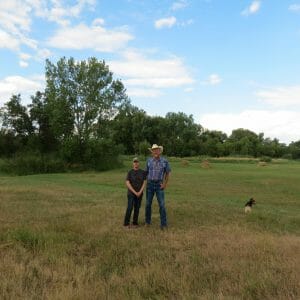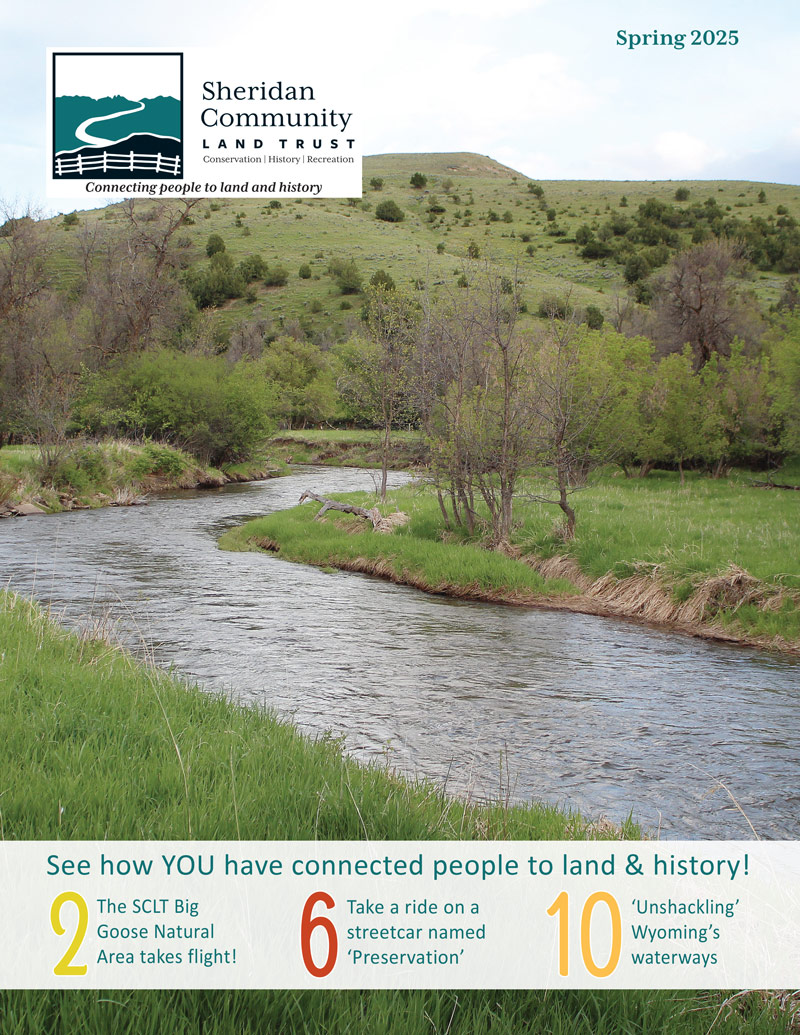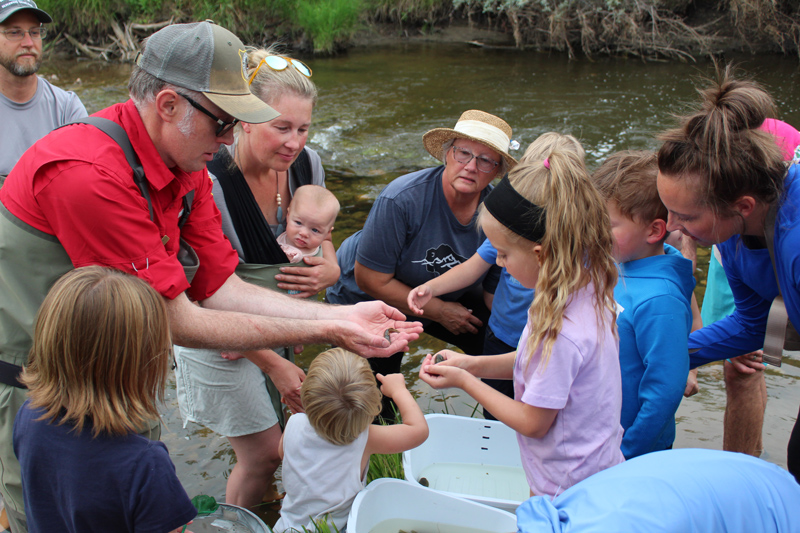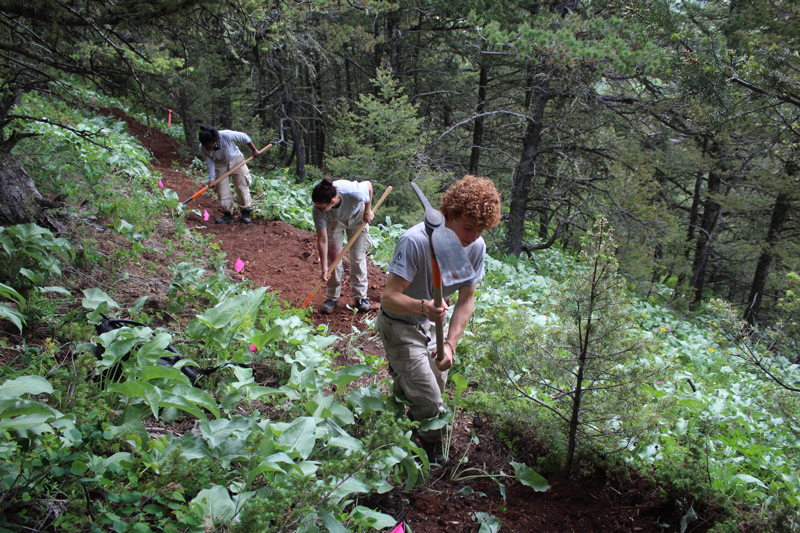 When John and Vanessa Buyok look out the window of their ranch home along the Tongue River, they have reason to smile. Sometimes, it’s because they’ve watched an owl land softly in a nearby cottonwood tree; other times, it’s because a crop of hay made it in before the rain. But often, it’s because they know that their ranch – and the valuable wildlife habitat within it – is richer and more vibrant, thanks to their foresight.
When John and Vanessa Buyok look out the window of their ranch home along the Tongue River, they have reason to smile. Sometimes, it’s because they’ve watched an owl land softly in a nearby cottonwood tree; other times, it’s because a crop of hay made it in before the rain. But often, it’s because they know that their ranch – and the valuable wildlife habitat within it – is richer and more vibrant, thanks to their foresight.
The Buyok family has ranched this land for nearly a hundred years. South Dry Creek, which meanders through the property, has provided seasonal water for their livestock, as well as habitat for deer, antelope, frogs and countless bird species.
For John and Vanessa, preserving the wildlife habitat on their land is a top priority, so in 2010 they protected 844 acres with a conservation agreement with Sheridan Community Land Trust.
But they didn’t stop there. In 2015, as part of a project under the Tongue River Initiative, the Buyoks received fencing around delicate habitat along South Dry Creek. Fencing lets the Buyoks give native grasses and shrubs a rest from continual livestock grazing and a chance to regenerate. The soil becomes healthier and moister, the grasses suppler, and erosion caused by seasonal run-off is greatly reduced. The stream also flows for longer each year. And the effects are visible.
On our annual conservation visit this June, the ranch looked amazing. The vegetation was bouncing back from initial disturbance by the fencing project, and as John explained, was lusher than ever. The pristine snowberries stood out against the healthy green backdrop, young willows lined the stream, and decade-old cottonwoods leafed out robustly.
John also reported that ranch life continued as usual. Even after fencing the cattle from fragile ecosystems for part of the year and changing the seasonal grazing schedule, John’s ranching operation hadn’t skipped a beat. “The grazing needed a little adjustment but worked out just fine.” John said, “And, the bird life has flourished.”
While the wildlife and scenery on Buyok’s ranch can easily steal the show, the economic value of choosing to protect areas near the water is well worth a mention. Increased diversity of birds and mammals; healthier and more fertile soil; flexible grazing in renewed pastures off the water; and cleaner, cooler waters are among the many benefits of riparian fencing that enhance the land’s present value, and the value in the future. For the Buyoks, their ranch in Sheridan County remains the best place to call home.









